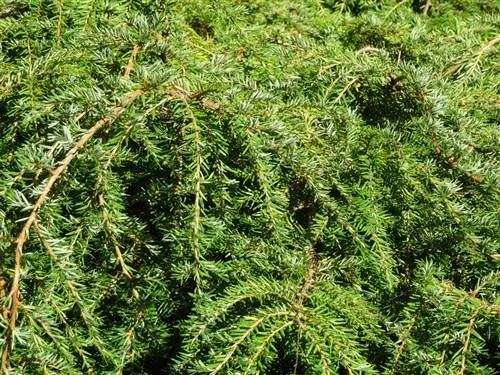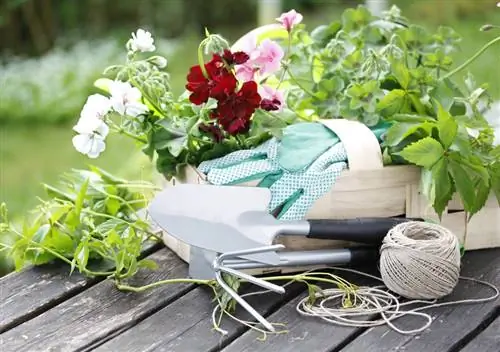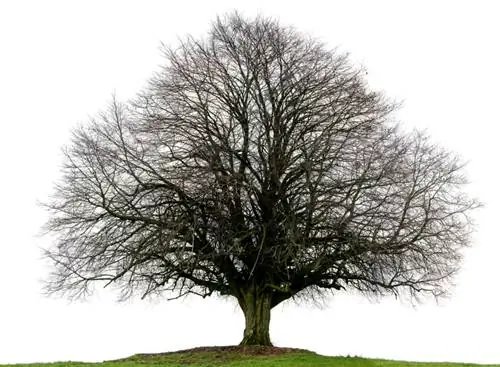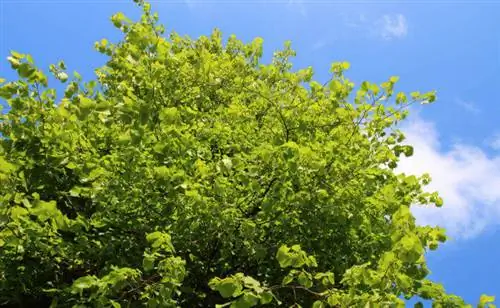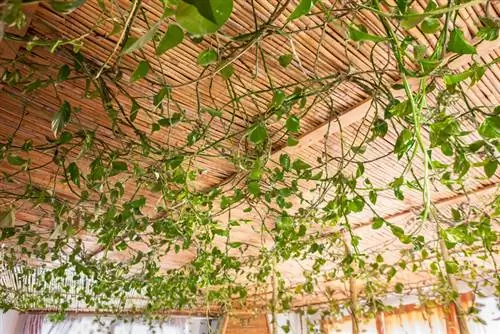- Author admin [email protected].
- Public 2023-12-16 16:46.
- Last modified 2025-01-23 11:20.
The hanging hemlock is a subspecies of Tsuga canadensis with particularly decorative, overhanging, downward-growing branches. It is suitable both for individual planting in an open area and as an evergreen, particularly pruning-tolerant hedge.
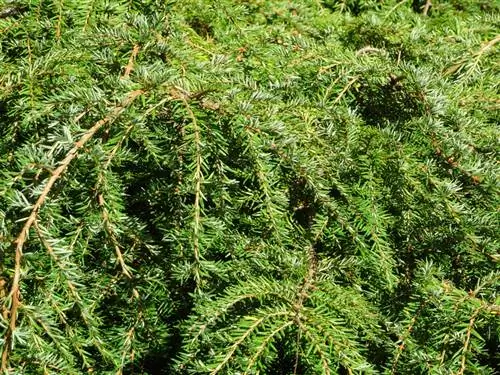
What are the characteristics of hanging hemlock?
The hanging hemlock (Tsuga canadensis) is a subspecies with overhanging branches that is suitable for individual plantings and hedges. It prefers humid, wind-protected locations, low-lime, humus-rich soil and reaches a height of 150-200 cm and a width of 200-300 cm.
The tall, upright growing Tsuga canadensis is particularly attractive in a large garden when left free. The coniferous tree can grow up to 10 meters high in our latitudes. The hanging hemlock firs usually do not grow tall, but spread wide with horizontal branches and an overhanging top. Its evergreen needles are shiny dark green. The height of a fully grown hanging hemlock is 150-200 cm, its width is 200-300 cm.
Caring for weeping hemlocks
The hanging hemlock prefers a humid location that should be protected from the wind, preferably near a pond. In any case, the soil should be low in lime and humus. The care of the Helmlock fir hardly differs from that of the large growing tree:
- regular and sufficient watering,
- Occasional fertilization with an acidic fertilizer (€8.00 on Amazon),
- Do not place heavy strain on the soil in the root area,
- cut back in spring before budding.
If the tree is to grow upright, the main branch must be led upwards. Then the height can reach up to 3-4 m. The young branches usually grow straight downwards. Due to its appearance, the plant is used in rock gardens and to grow over walls.
Variety overview
- Tsuga canadensis nana (initially grows wide and later cascade-like, overhanging)
- Coles Prostrate (creeping hemlock with creeping downward branches)
- Tsuga canadensis gracilis (old variety that grows slowly)
- Tsuga canadensis pendula (picturesque, with horizontal branches, also for partially shaded, slightly moist locations)
- Tsuga caroliniana La Bares Weeping (branches hanging very tightly with long, blue-green needles)
Tip
If the soil in your garden is too calcareous, the needles may turn yellow. A little peat in the plant hole can help the newly planted tree get off to a good start.

